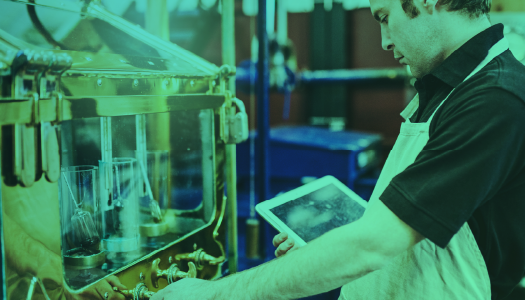Stop Checking the Box on Advancing Sustainability
Sustainability.
If ever a buzzword has existed! Ask 10 different people to define it and you can get 10 different answers. Consensus would agree that the proper definition of sustainability is something along the lines of: The ability to meet the needs of the current generation, without compromising the needs of future generations. Now stop and ask yourself, “What is sustainability for you (or your organization)?" This context is needed because “sustainability” has become all encompassing, forcing organizations to prioritize focus, or get lost in the ether.
I recently saw a company advertising their increase in sustainable practices, boasting lower carbon emissions and better ESG ratings. What did they do? They gave their employees reusable water bottles and coffee mugs. That’s it. Now, hold on, you might say! That company is making a difference! I don’t disagree but my point is that “sustainability” has become unrestrained in business applications, thus being relegated to a box to be checked.
Contrast the organization above with another recent study I read involving an organization that collectively defined their sustainability strategy (and yes, it included reusable water bottles!) and prioritized action based on scalability. They were able to start with an easily adoptable sustainability strategy—switching to renewable office supplies. From there, they would grow into the use of energy efficient building equipment and systems, make things like LEED certified new construction the standard, and educate employees on conservation-related practices at home and in the workplace.
The reality is that both of these organizations would be labeled “sustainable.” So, what? Well, if you have been tasked with creating, enhancing or reimagining a sustainability program at your organization, I propose a few key items will make that program…. well…sustainable.
First, as with most things, ask yourself one question—what is the goal? Are you looking to simply check a box, or are you looking to make a consistent, long-term impact on how the organization utilizes resources? Before you decide that the status quo is the route you’ll take, consider the substantial up-trend in value consumers place on “sustainable companies” that are going beyond the bare minimum. Aside from building a greener brand, you might also consider the financial gains of smart energy management practices in facilities you own and/or manage. The bottom line is that vision without a goal is simply a dream. Common examples of sustainability goals or KPI’s include:
- Reduce one-use plastic by % year over year
- Reduce utility consumption by % year over year
- 2030 or 2050 Zero-Carbon Goals
- Increase landfill diversion rates by % year over year.
- New construction green standards
After you’ve set your goal(s), ensure you have proper people, processes and technologies in place to track toward defined goals. It goes without saying that you can’t manage what you don’t measure. Spreadsheets, dashboards and/or dedicated software vendors like Brightly provide consistency and support. For example, studies show up to 20% return on investment when monitoring utility consumption at the building level.
Finally, don’t forget to report and celebrate success. Nothing builds momentum and adoption quite like winning stories. In fact, many global locales are beginning to require sustainability disclosures through frameworks like EnergyStar, GRESB, SASB, GRI, CDP, and more. Take time to investigate what frameworks might be required and/or best suited for your success stories.
In summary, sustainability is weakened when organizations look to simply check a box. Truly sustainable organizations define what sustainability means for them, set goals, track progress and report on success toward achieving those goals.




